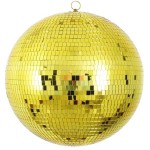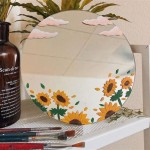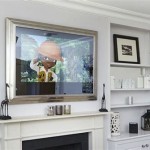Tilt Mirrors for Bathroom
Bathroom mirrors are essential fixtures, providing functionality and contributing to the overall aesthetic. Among the various types available, tilt mirrors offer a unique blend of practicality and style. This article explores the features, benefits, installation processes, and maintenance tips associated with tilt mirrors for bathrooms.
Understanding Tilt Mirrors
Tilt mirrors, also known as adjustable mirrors, differ from fixed mirrors due to their adjustable angle. A pivoting mechanism connects the mirror to its frame or wall mount, allowing users to adjust the mirror's angle both vertically and, in some cases, horizontally. This adjustability provides a customized viewing experience, catering to individual height and preference.
Benefits of Using Tilt Mirrors
The adjustable nature of tilt mirrors offers several advantages. For households with members of varying heights, the adjustable angle eliminates the need to stoop or stretch to achieve a clear view. This is particularly beneficial for individuals with mobility issues or back problems. Furthermore, tilt mirrors minimize glare from overhead lighting, allowing for a clearer reflection in various lighting conditions.
Types of Tilt Mirrors
Tilt mirrors are available in various shapes, sizes, and styles to complement different bathroom aesthetics. Common shapes include rectangular, oval, round, and square. Framing materials range from sleek chrome and brushed nickel to classic wood and ornate metal finishes. Some tilt mirrors also integrate features like built-in lighting, magnification, or defogging mechanisms, further enhancing their functionality.
Installation of Tilt Mirrors
Installing a tilt mirror involves several key steps. First, the desired location on the wall must be identified, ensuring adequate clearance and proximity to a power source if the mirror includes lighting or other electrical features. Next, the mounting bracket is securely affixed to the wall using appropriate hardware. The mirror is then attached to the bracket, utilizing the pivoting mechanism. Finally, the angle of the mirror is adjusted to the desired position and secured.
Choosing the Right Tilt Mirror
Selecting the appropriate tilt mirror requires consideration of several factors. The size of the mirror should be proportional to the size of the bathroom and vanity. The style of the frame should complement the overall bathroom décor. Functionality, such as built-in lighting or magnification, should be considered based on individual needs and preferences. Finally, the quality of the mirror and its mounting hardware should be evaluated to ensure durability and longevity.
Maintenance and Care
Maintaining the appearance and functionality of a tilt mirror involves regular cleaning and occasional adjustments. The mirror surface can be cleaned with a standard glass cleaner and a soft cloth. The frame and mounting hardware should be wiped down to remove dust and grime. The pivoting mechanism should be checked periodically for smooth operation and lubricated if necessary. Any loose screws or hardware should be tightened to ensure the mirror remains securely mounted.
Integrating Tilt Mirrors in Different Bathroom Styles
Tilt mirrors can be incorporated into a variety of bathroom design styles. In a modern bathroom, a frameless or sleekly framed tilt mirror can enhance the minimalist aesthetic. For a traditional bathroom, a tilt mirror with an ornate frame can add a touch of classic elegance. In a rustic bathroom, a tilt mirror with a wooden frame can complement the natural elements. The versatility of tilt mirrors allows them to seamlessly integrate into diverse design schemes.
Safety Considerations
When installing and using a tilt mirror, certain safety precautions should be observed. Ensure the mounting hardware is appropriate for the wall type and weight of the mirror. Use caution when adjusting the mirror’s angle to avoid pinching fingers or damaging the wall. If the mirror includes electrical components, ensure proper wiring and grounding to prevent electrical hazards. Regularly inspect the mirror and its mounting hardware to identify any potential safety issues.
Innovations in Tilt Mirror Technology
Advancements in technology are continuously enhancing the functionality of tilt mirrors. Some models now feature integrated LED lighting with adjustable brightness and color temperature. Others incorporate touchless controls for adjusting the angle and activating features like defogging. Smart mirrors with integrated displays and voice control are also emerging, offering a futuristic and highly personalized bathroom experience.

Giagni 20 In X 24 Matte Black Tilting Bathroom Vanity Mirror At Com

Tilting Bathroom Mirrors Design Ideas

Tilt Round Bathroom Mirror 24 Reviews Cb2

Gold Pivot Mirror Rectangle Bathroom Mirrors For Wall 24 36 Inch Brightify Tilt With Rounded Rectangular Frame Horizontal Or Vertical Mounted Tilting Living Room Com

Isabel Rectangular Tilting Mirror

Tilt Rectangular Bathroom Mirror 24 X36 Reviews Cb2

Metal Frame Pivot Wall Mirror West Elm

Zora 32 X24 Pivoting Rectangle Bathroom Mirror Tilt Metal Framed Vanity Mirrors For Wall Hanging Gold The Pop Home Target

Arched Wall Mirror Bathroom Vanity Gold Large Pivot Frame Tilt 36 Tilting New

Webster 38 X26 Pivoting Rectangle Bathroom Mirror Tilt Metal Framed Vanity Mirrors For Wall Hanging Gold The Pop Home Target








